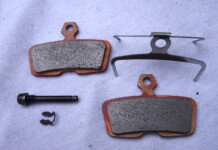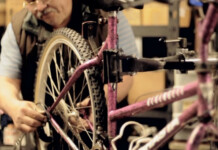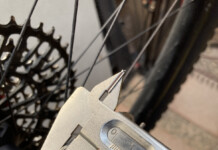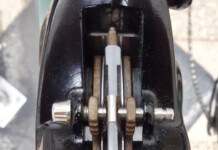By Tom Jow
Last month I had the opportunity to work a booth at the annual Sports-Am Bike Swap. This colorful event brings together many bike sellers with even more potential bike buyers. After speaking with several shoppers, and observing many more, I came to the conclusion that having so many choices under one roof may be a little overwhelming for the inexperienced shopper. In fact, bicycle technology changes so quickly that all bike shoppers can benefit from doing some homework before setting out into the sea of bicycle offerings. This homework includes interviewing oneself about how this new bike will be used and then researching specific categories of bicycles. Afterward, prepare to spend some time asking questions and trying out a couple bikes at local shops before making your purchase.
The most obvious questions asked about purchasing a new bicycle are what type and how much to spend. There are, however, so many more questions to be asked. Even leading in with the question “how will this bike be used?” is just one of many more. Is the bike going to be used for commuting, fitness, or something more? Two or three times a week or everyday? Will you be riding at a casual pace with just a couple friends or with large groups that are often pushing the pace? What kind of rides do your friends do? All day cross-country rides or hair-raising downhill runs preceded by a car shuttle to the top? Do you have any goals for cycling? One hundred miles, two hundred miles, twenty-four hours? These are just some of the questions which can help you narrow down your search for a new bike.
Once you have figured out how this bike will really be used, research into different brands and models can begin. Thanks to the internet, shoppers can research every brand and model available before stepping into a bike shop. Keep in mind that in the current bicycle climate, it is difficult to purchase a “bad” bike but easy to purchase the wrong one. There are many bikes available for nearly every use and budget and the line between categories is often unclear. The important thing is to find the correct category, then select the the best bike for your needs that your budget can handle.
Road cyclists, for example, can choose between the basic categories of touring/commuting, sport or performance/racing models. Commuters can use any bicycle, but a touring bike or hybrid with rack mounts are best for serious load carrying. Expect to spend up to or around $1000 for one of these. People riding on the road for fitness may use either of these, or step up to a sport or performance road bike. For the person intending to stay on the lower end of the speed/ mileage scale, a good entry level sport bike can be purchased for under $1000. The rider with a bigger budget and more performance in mind will find the best value between $2000-$3000. Bikes available at this level have most of the technology features of top of the line road bikes without the price.
Mountain bikers have a different set of categories to work with. Front suspension mountain bikes, or hard tails, have become the entry level mountain bike with the exception of top of the line racing models. A good trail worthy hard tail starts at approximately $1000. A race worthy rig will cost $2000 or more. For someone who wants to ride fast on steep, rocky trails there is no choice but full suspension. The basic full suspension bike has 4 inches of wheel travel and will cost $1200+. More wheel travel costs more, but also allows the rider to do more in terms of speed and types of terrain. In addition, there are three wheel sizes (26”, 650B, and 29”), and different categories of bikes for uphill, downhill and everything in between.
With all that information at our fingertips, there are bound to be questions. Now it is time to head over to the bike shop. Prepare yourself to spend a little time there. Dress in comfortable clothes for riding and bring helmet, bike shoes, and your pedals if you have them. The process of selecting bikes and getting them setup try out takes a little time so be patient. If possible, leave distractions such as kids, dogs and phone at home or in the car. Be sure to try out at least two bikes and if you test more than that, don’t expect to find the “one” on your first go around. If you’re lucky, you’ll just figure out which ones you don’t like. Another thing to consider when making your purchase is the dealer. Your local bike shop is a valuable resource so you will want to a) resist shopping purely by price (i.e. internet), b) trust the people there and c) be in close proximity either at home, work or commute route.
Buying a new bike can be a confusing and time consuming process. Like any investment it worthy of some research prior to purchase. Taking some time to assess your cycling needs, goals and budget prior to visiting the bike shop will make selecting a bicycle much easier. Preparation for visiting the shop will make the process of choosing bikes to test ride more direct and distraction free. Purchasing can then be done with more confidence. Riding the correct bicycle for your needs will ensure hours (days, months, years) of enjoyment riding to come.
Got a bike question? Email Tom at [email protected].









